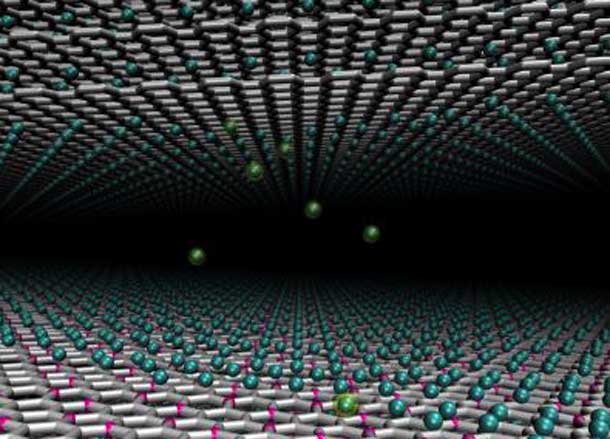
THUNDER BAY – Graphite exploration in Northwestern Ontario has raised a great deal of excitement.The Albany Graphite find, which Zenyatta Resources has been developing is a rare vein graphite resource. While the development continues, the real excitement of graphite is increasing research into grapheme.
The latest discovery of the Nobel Prize winning discovery of graphene is a faster Internet and wireless telecommunications technology.
A Graphene Powered Internet
In a paper published in Physical Review Letters, researchers from the Centre for Graphene Science at the Universities of Bath and Exeter have demonstrated for the first time incredibly short optical response rates using graphene, which could pave the way for a revolution in telecommunications.
Every day large amounts of information is transmitted and processed through optoelectronic devices such as optical fibres, photodetectors and lasers. Signals are sent by photons at infrared wavelengths and processed using optical switches, which convert signals into a series of light pulses. Ordinarily optical switches respond at rate of a few picoseconds – around a trillionth of a second. Through this study physicists have observed the response rate of an optical switch using ‘few layer graphene’ to be around one hundred femtoseconds – nearly a hundred times quicker than current materials.
Smart Graphene Powered Electronics?
Smart electronics are taking the world by storm. From techno-textiles to transparent electronic displays, the world of intelligent technology is growing fast and a revolutionary new device has just been added to its ranks.
Researchers at the University of Exeter have developed a new photoelectric device that is both flexible and transparent.
The device, described in a paper in the journal ACS Nano, converts light into electrical signals by exploiting the unique properties of the recently discovered materials graphene and graphExeter. GraphExeter is the best known room temperature transparent conductor and graphene is the thinnest conductive material.
At just a few atoms thick, the newly developed photoelectric device is ultra-lightweight. This, along with the flexibility of its constituent graphene materials, makes it perfect for incorporating into clothing. Such devices could be used to develop photovoltaic textiles enabling clothes to act as solar panels and charge mobile phones while they are being worn.
Graphene is just one atom thick, but remarkably strong. Scientists have suggested that it would take an elephant, balanced on a pencil to break through a single sheet. Already dubbed a miracle material due to its strength, lightness, flexibility, conductivity and low cost, it could now enter the market to dramatically improve telecommunications.
Commenting on the report’s main findings, lead researcher Dr Enrico Da Como said: “We’ve seen an ultrafast optical response rate, using ‘few-layer graphene’, which has exciting applications for the development of high speed optoelectronic components based on graphene. This fast response is in the infrared part of the electromagnetic spectrum, where many applications in telecommunications, security and also medicine are currently developing and affecting our society.”
Co-Director of the Centre for Graphene Science at Bath, Professor Simon Bending added: “The more we find out about graphene the more remarkable its properties seem to be. This research shows that it also has unique optical properties which could find important new applications.”
In the long term this research could also lead to the development of quantum cascade lasers based on graphene. Quantum cascade lasers are semiconductor lasers used in pollution monitoring, security and spectroscopy. Few-layer graphene could emerge as a unique platform for this interesting application.














